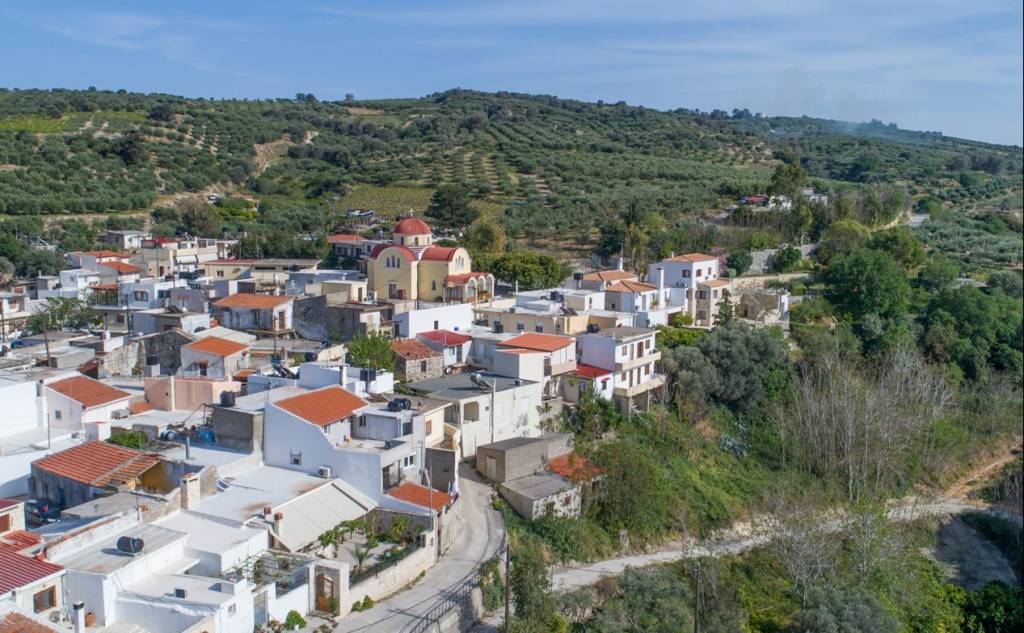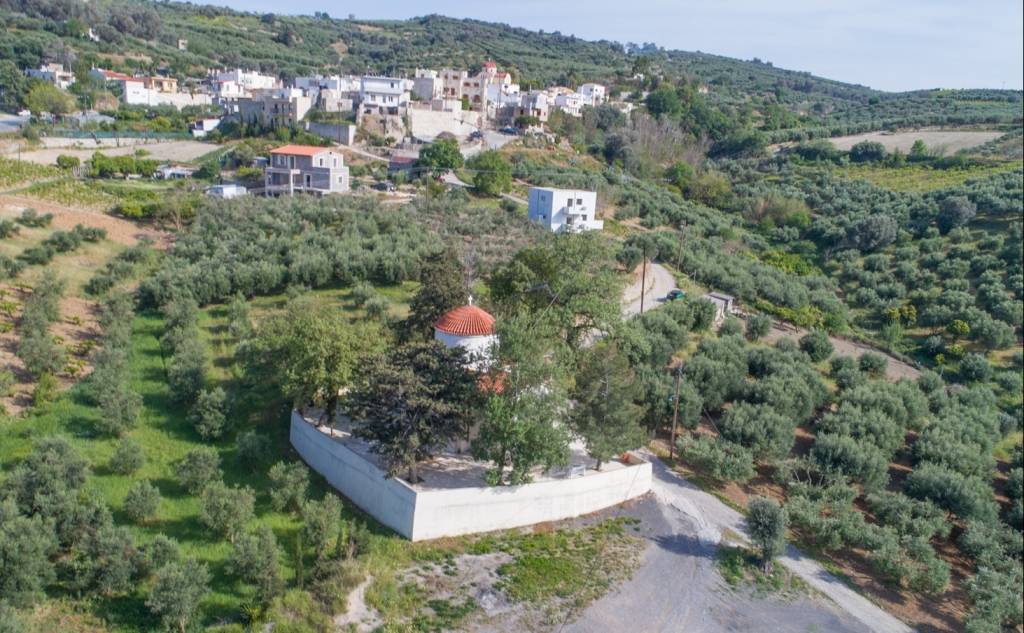





The village of Keramoutsi is built in an area overgrown with vines and has about 340 permanent residents. It is just 3.5 km from Tylissos and 15 km from Heraklion. In 1583, it was mentioned by Kastrofylakas as Chieramuzzi with 192 inhabitants, while in the Turkish census of 1671, it is referred to as Keramuci.
When the visitors arrive at the village, their attention is "drawn" by the paintings on the walls that have been turned into canvases by painter Elena Gigasvili-Thrapsaniotaki, who offered voluntary action to beautify the village even more.
Here, you can wander the narrow alleys, admire the old mansions, and enjoy your coffee in the traditional square with the old fountain and the giant mulberry tree, which testifies that the inhabitants were engaged in sericulture in the old days.
To the northeast of the village, the Venetian fortress Malvicino (Castel Malvizini), which gave its name to the whole province, used to dominate the area on the Kastelli earthen hill. Subsequently, the region gave its name to the most famous wine of all time, the Malvasia wine, which was exported to Europe for many centuries.
In Keramoutsi, the visitor can also see the church of Panagia (Presentation of the Virgin), with interesting frescoes, the church of Agios Antonios (with frescoes of 1434), the parish church of Saints Constantine and Helen, as well as the small church of Agios Georgios.
Captain Iraklis Kokkinidis (1842-1868), a hero who was sacrificed in the liberation struggles of Crete against the Turks, came from the village of Keramitsi. He was the leader of Malevizi-Temenos during the revolution of 1866. He was killed in 1868, at the age of 26, in the battle of the Gazan River, near Servili. The bust of Iraklis Kokkinidis is located in the village square and is dedicated to his heroic figure.
Finally, in Flega, on a plateau next to the river, a landscaped recreation area is ideal for fun and relaxation moments.